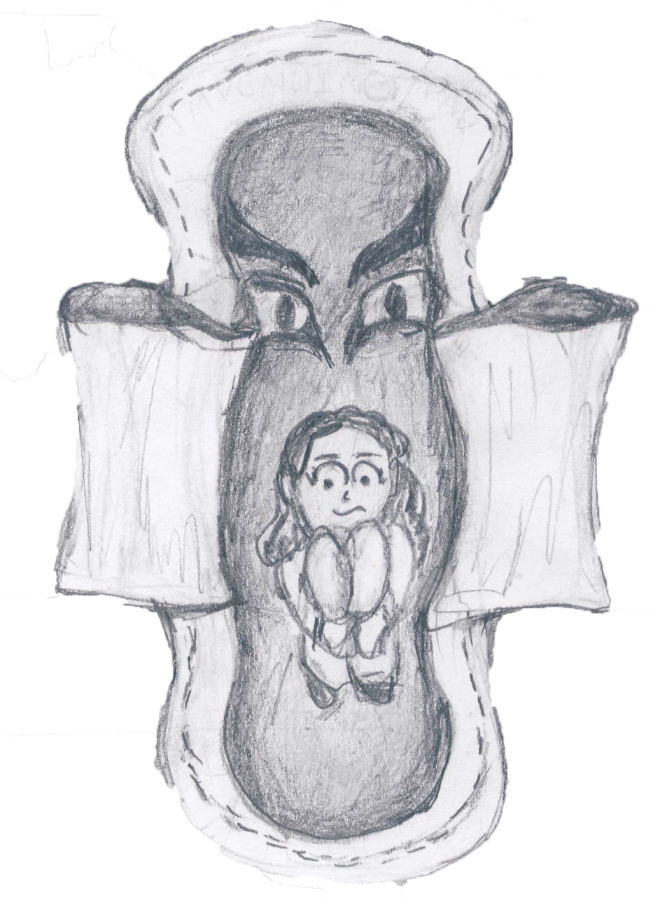The Period Tax
I menstruate.
There! I said it.
Once a month, my uterine lining sheds, and I bleed for about a week. I get nasty cramps, and the occasional headache. I can be pretty irritable, sad, and stressed, both before and during my period. It’s not the most pleasant experience, to tell you the truth, and I’m not sure if anyone who menstruates would tell you otherwise. But I can’t do much about it except take a few ibuprofens and be sure I’ve got what I need in my backpack.
Yes, I menstruate, and I’m not the only one.
I buy pads to manage my blood flow, and I’m not the only one.
I get taxed for these products, and I’m certainly not the only one.
You heard me right, people. As a menstruator who needs certain products to ensure some degree of comfort during one of the most uncomfortable times of the month, I pay a little extra on said products. And it’s not just pads. Tampons, menstrual cups, and essentially any other feminine hygiene product are subject to this annoying little thing called the “tampon tax.”
Perhaps you’ve heard of it, but don’t be shocked if you haven’t. Before a few months ago, I wasn’t aware of it either. It came as a kick in the gut when I learned that I’d been paying extra for these products since I began menstruating at around age 12. That’s four years of taxes, folks. And, if things keep going the way they are, I should expect to keep paying these taxes for another 35 years, with 51 as the average age of menopause.
Hey, that’s only 39 years of extra taxes for my biology. No big deal, right?
WRONG! It’s a bloody disgrace!
Before we proceed, let me clarify something. Currently, 35 states (including the good ol’ Buckeye State) and some localities within states include feminine hygiene products in their sales tax bases. It’s not like they officially mandate a special tax on feminine hygiene products, but it’s the same aggravating effect either way.
In our state, feminine hygiene products are subject to both state and local sales taxes. The state sales tax is currently 5.75%, and local sales taxes will vary. Walnut Hills High School is in Hamilton County, which, according to Avalara.com, has a combined sales tax rate of 7% (this includes state and county sales tax rates).
That means if Aunt Flo pays me a surprise visit after school, and I swing by the nearby UDF to pick up, say, a pack of Always pads that cost about $7, I’ll be charged an extra $.49.
Yes, I know it’s not THAT much (but, if I had an extra penny, that money could get me a snack from the vending machine. Just saying.).
Here’s another scenario for you: in Ohio, as in most other states, food isn’t subject to sales taxes. So when I’m checking out at the grocery store, I see that I’m getting charged extra for that same pack of Always while the ice cream gets rung up as-is. Although I can’t complain about not having to pay a tax on ice cream, I always have something of a “BRUH” moment when I realize that my truthfully-unnecessary frozen dairy dessert doesn’t get a tax while the thing that ensures I don’t bleed all over my chair does.
Personally, it’s not about the economics. What bothers me is that I, along with millions of other Americans who menstruate, have to pay extra for something that already poses an added expense.
In December, legislation addressing Ohio’s tampon tax almost unanimously passed the Ohio House, but never came to a vote in the Senate. The legislation was reintroduced in February, and I have yet to hear of any updates regarding its progress. Meanwhile, I’m getting a tad bit impatient.
This is an issue that truly defies politics. Bleeding has no political ideology. Whether they’re Republicans, Democrats, or Independents, people who menstruate are facing a surcharge for something they need to manage a process out of their control.
You don’t have to be a feminist, nor do you have to menstruate, to find the tampon tax wrong. Getting taxed for something that’s already an additional expense is, when you think about it, pretty unfair, regardless of the size of that tax. And, speaking about women specifically, who get charged more on other products with the “pink tax” and who earn less than men with the wage gap, taxing feminine hygiene products becomes even more messed up.
So what should we do? Wait patiently, period after period, tampon after tampon, pad after pad, until this bill or another one finally passes? Or should we speak up? Contact our state and local officials to speak our minds. Vocally protest this subtle injustice.
If we let our legislators know that we, as the population they represent and the population responsible for their placement in office, can’t even see red anymore with all this green surrounding it, perhaps we’ll make Ohio the 16th state in the nation to uplift the tampon tax.
Unfortunately, uplifting the tampon tax will likely result in a $4 million loss of revenue, but I believe that equality eclipses economics. And if Ohio uplifts its tampon tax, maybe other states will follow our lead, clearing the path to a tampon tax-free nation.
So let’s work together to end the tax on feminine hygiene products in Ohio.
Period.
Your donation will support the student journalists of Walnut Hills High School. Your contribution will allow us to purchase equipment, cover our annual website hosting, printing costs and offset competition and conferences fees for students.








